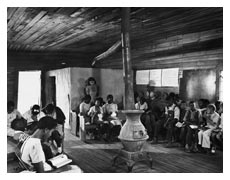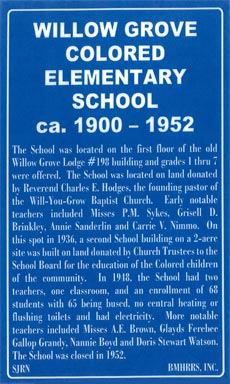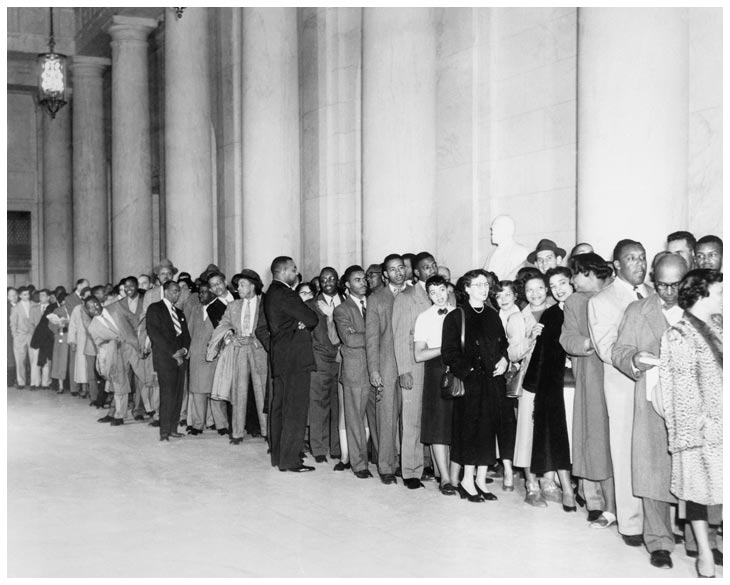
1941-Georgia: One teacher, school in Georgia. (Copyright Bettmann/Corbis / AP Images)

Mrs. Ella J. Rice, talks to one of her pupils, all of whom are white, in a third grade classroom of the Draper Elementary School in southeast Washington, D.C., September 13, 1954. This is the first day of non-segregated schools both as to teacher and pupils, in the District of Columbia public school system. Mrs. Rice is the only black teacher in the school. (AP Photo)

Willow Grove Elementary School. ©2006 Dr. E. Curtis Alexander. Photo courtesy of Bells Mill Historical Research and Restoration Society, Inc., Chesapeake, VA.
(Full publication link below)
On May 17, 1954, the United States Supreme Court ruled that school segregation was unconstitutional, and cleared the way for the desegregation of public schools. Chief Justice Earl Warren's announcement of the unanimous decision was not just powerful—for much of the country, it was stunning.
We come then to the question presented: Does segregation of children in public schools solely on the basis of race, even though the physical facilities and other "tangible" factors may be equal, deprive the children of the minority group of equal educational opportunities? We believe that it does.
We conclude that in the field of public education the doctrine of 'separate but equal' has no place. Separate educational facilities are inherently unequal. Therefore, we hold that the plaintiffs and others similarly situated for whom the actions have been brought are, by reason of the segregation complained of, deprived of the equal protection of the laws guaranteed by the Fourteenth Amendment.
The significance of Brown v. Board of Education can be understood by examining the past, the present, and its implications for the future. The Brown decision was the first step in striking down long-standing laws that denied equal rights to African-American citizens, and was the catalyst for the Civil Rights Movement that followed.The road to Brown and the Civil Rights Movement is a story of a people—individuals who tapped into an inner courage and strength that has sustained them for centuries of racial bigotry, indignities, and discrimination to right social inequities and injustice, claim their inalienable rights, and make the future better for generations to come.

December 7, 1953 - Washington: Crowds line up in the Supreme Court Building in Washington to hear second round arguments challenging the constitutionality of segregation in public schools. (Copyright Bettmann/Corbis / AP Images)
Transcription of the historic Griffin v. Prince Edward County case, in which the Supreme Court ordered the Prince Edward public schools open after being closed in defiance of Brown v. Board for five years.